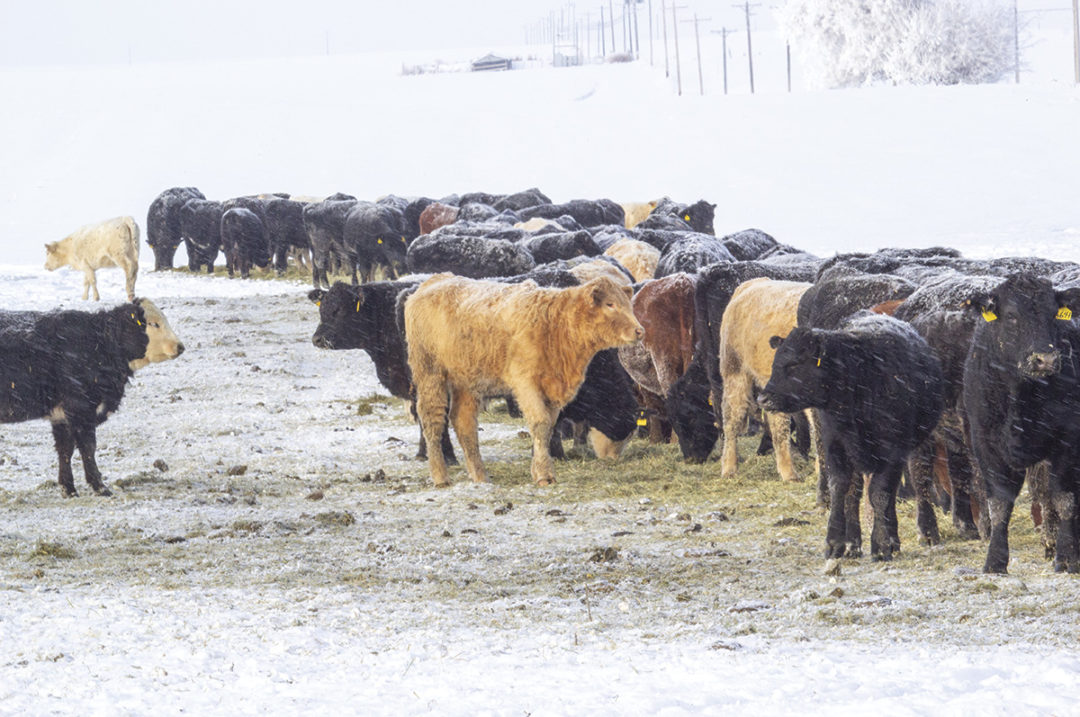As fall turns to winter, many of us take solace in watching the leaves transition through the various stages of vibrant colors, signaling the passing of another season of growth into a season of dormancy. Like the leaves, your pastures are undergoing similar changes in plant maturity as the plant prepares itself for the harsh, cold winter months. This begins in the early fall when the plant quickly starts declining in nutritional value and continues until the plant eventually stops growing altogether.
This is a time that cow-calf producers across the country are all too familiar with as their daily chore list seems to double in length; those bawling mamas are constant reminders of the feed that still needs to be put out before dark. Many ranchers have accepted this as their life’s calling, a task that comes around once a year that just needs to be done if they expect to stay in the cattle business.
The biological cycle of forage maturity is something that doesn’t necessarily take an advanced degree to observe. While periodic testing of your forages is recommended to dial in your cow herd’s supplementation needs for crude protein and energy, a forage analysis shouldn’t be the only method producers use to monitor their forage quality throughout the year. In fact, ask any experienced rancher who has wintered a group of cows, and they could probably tell you how their forage is doing and when the quality is beginning to decline. They can’t tell you exactly what the protein or energy levels are, as that would require a simple forage analysis, but they can tell what direction it is headed. This is done by simply watching the appearance of the forage as it progresses from the vegetative stage to the reproductive stage. Shortly after the plant shoots a stem, a seedhead begins to emerge, signaling that quality is declining as the ratio of leafy material to stem begins to drop.
Producers can monitor this decline in plant quality by closely watching what is coming out the rear ends of their cows. Manure appearance and consistency is a quick and dirty way for ranchers to tell how their forage quality is holding up. When the patties begin to stack or pile, it’s a sign of declining forage digestibility and that the cow’s current diet simply isn’t providing enough nutrition to meet her needs. If not addressed quickly, this lack of adequate nutrition will start to reduce body condition of your cows, which is the final indication that your forage quality has dropped off. For both spring and fall herds, losing condition throughout the winter months is not recommended, as it is much more costly to regain, and we are still months away from spring and green grass. Maintaining acceptable body condition throughout the fall and winter months is key to cow longevity in your herd.
Supplementing cows throughout the winter months in an attempt to maintain somewhat constant nutrition with a mix of either supplemental protein, forages or both significantly reduces the risk of cows suffering setbacks in body condition and overall productivity. The determining factor of the type of supplementation that is necessary comes down to the needs of your operation. The availability and type of forage on your ranch, as well as the physiological stage of your cows, will determine what type of supplementation is needed and how much each cow will require throughout the winter. Supplemental feeding may keep your cows in production, but the cost of supplementing them may push you out of business.
It’s widely recognized that feed expenses constitute a significant portion of the total cost of managing cows, accounting for approximately 70% to 80% of their annual maintenance. When you also consider the escalating expenses associated with fuel, machinery, labor and interest rates, the financial burden of providing supplemental feed during the winter months can be substantial. The challenge, therefore, lies in optimizing the nutritional value derived from both standing forage and supplemental feed in order to minimize the overall costs associated with meeting the cows’ dietary needs.
Fortunately, there are options to improve the digestibility and utilization of the feedstuffs the animals are consuming. One option is to feed an effective, science-based, research-proven probiotic. Once in the rumen, these additional live bacteria aid in the breakdown of the feed. In vitro data supports the notion that effective spore-forming bacteria, once animated to their vegetative state in the animal, will naturally produce a variety of beneficial enzymes – including cellulase, esterase lipase and amylase – that enhance digestion and absorption of nutrients derived from complex feedstuffs. Cattle grazing on dormant pasture during the winter months will cause these beneficial bacteria to produce more fiber-digesting enzymes, thus increasing the nutrients available from the forage.
Daily feeding of an effective probiotic can help your cattle tackle nutritional and health challenges by maximizing the nutrients from the forage, regardless of quality. Probiotics also help bolster the normal functions of the gastrointestinal tract, such as digestion, absorption, immune and barrier functions, particularly if there are issues with feed hygiene. A new two-strain probiotic that combines two highly researched bacilli, Bacillus licheniformis and Bacillus subtilis, has been shown to improve the ability of grazing cattle to get nutrients from their feed, to absorb those nutrients throughout a healthy digestive system and to reduce the impact of harmful bacterial infections in their gastrointestinal tracts.









